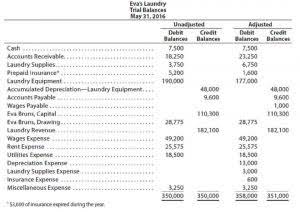
Thus, the first 1,700 units sold from the last batch cost $4.53 per unit. The inventory process at the end of a year determines cost of goods sold (COGS) for a business, which will be included on your business tax return. COGS is deducted from your gross receipts (before expenses) unearned revenue to figure your gross profit for the year.
- Calculate the value of ending inventory, cost of sales, and gross profit for Lynda’s first six days of business based on the LIFO Method.
- When prices are spiralling down, businesses can consider the LIFO method.
- In addition, there is the risk that the earnings of a company that is being liquidated can be artificially inflated by the use of LIFO accounting in previous years.
- The LIFO method is permissible under U.S. tax law, making it an attractive option for companies operating within the United States looking to take advantage of the method’s tax benefits.
- Suppose the people responsible for inventory in a business store them vertically in a business.
- While the LIFO method may lower profits for your business, it can also minimize your taxable income.
Average Cost Method of Inventory Valuation
For example, on the first day, 10 units of inventory were added at the cost of $500 each, lifo inventory method formula which we will record as follows. Under the LIFO method, the value of ending inventory is based on the cost of the earliest purchases incurred by a business. LIFO reserve refers to the amount by which your business’s taxable income has been reduced as compared to the FIFO method. In January, Kelly’s Flower Shop purchases 100 exotic flowering plants for $25 each and 50 rose bushes for $15 each. Once March rolls around, it purchases 25 more flowering plants for $30 each and 125 more rose bushes for $20 each. It sells 50 exotic plants and 25 rose bushes during the first quarter of the year for a total of 75 items.
- You may have noticed that perpetual inventory gave you a slightly lower cost of goods sold that periodic did.
- If inflation and other economic factors (such as supply and demand) were not an issue, dollar-value and non-dollar-value accounting methods would have the same results.
- LIFO is often used by gas and oil companies, retailers and car dealerships.
- Under periodic, you wait until the end of the period and then take the most recent purchases, but under perpetual, we take the most recent purchases at the time of the sale.
- Our Goods & Services Tax course includes tutorial videos, guides and expert assistance to help you in mastering Goods and Services Tax.
- In other words, FIFO is an ideal method for rising prices, while LIFO should be used when prices fall as expensive products get sold first.
Advantages and Disadvantages of LIFO Method

This can make the business look more successful and appealing to investors, but it also comes with a higher tax bill. FIFO assumes a regular inventory turnover, and the remaining inventory has a higher value compared to other inventory valuation methods. Companies have their choice between several different accounting inventory methods, though there are restrictions regarding IFRS. A company’s taxable income, net income, and balance sheet balances will all vary based on the inventory method selected. If inflation and other economic factors (such as supply and demand) were not an issue, dollar-value and non-dollar-value accounting methods would have the same results.
The LIFO Method

Since customers expect new novels to be circulated onto Brad’s store shelves regularly, then it is likely that Brad has been doing exactly that. In fact, the very oldest inventory of books may stay in inventory forever and never be circulated. This is a common problem with the LIFO method once a business starts using it, in that the older inventory never gets onto shelves and sold. Depending on the business, the older products may eventually become outdated or obsolete.

A bicycle shop has the following sales, purchases, and inventory relating to a specific model during the month of January. If prices are falling, earlier purchases would have cost higher which is the basis of ending inventory value under LIFO. In a period of falling prices, the value of ending inventory under LIFO method will be lower than the current prices. LIFO method values the ending inventory on the cost of the earliest purchases. The example above shows how inventory value is calculated under a perpetual inventory system using the LIFO method.

Lower Tax Liability
Adding cost of goods sold and ending inventory gives us $3,394.00 which ties back to goods available for sale. Kristen Slavin is a CPA with 16 years of experience, specializing in accounting, bookkeeping, and tax services for small businesses. A member of the CPA Association of BC, she also holds a Master’s Degree in Business Administration from Simon Fraser University. In her spare time, Kristen enjoys camping, hiking, and road tripping with her husband and two children.

FIFO states that if the bakery sold 200 loaves on Wednesday, the COGS (on the income statement) is $1 per loaf because that was the cost of each of the first loaves in inventory. The $1.25 loaves would be allocated to ending inventory (on the balance sheet). According to the perpetual timeline, the only sale made during the month is from the opening inventory which means that the ending inventory is entirely based on the 3 units purchased during the month. A LIFO periodic system finds the value of ending inventory by matching the cost of the earliest purchase of the accounting period to the units of ending inventory. To calculate the cost of sales, we need to deduct the value of ending inventory calculated above from the total amount of purchases.
As a result, LIFO isn’t practical for many companies that sell perishable goods and doesn’t accurately reflect the logical production process of using the oldest inventory first. The value of ending inventory is the same under LIFO whether you calculate on periodic system or the perpetual system. Out of the 18 units available at the end of the previous day (January 5), the most recent inventory batch is the five units for $700 each. In this lesson, I explain the easiest way to calculate inventory value using the LIFO Method based on both periodic and perpetual systems. If Kelly’s Flower Shop uses LIFO, it will calculate COGS based on the price of the items it purchased in March. The FIFO (“First-In, First-Out”) method means that the cost of a company’s oldest inventory is used in the COGS (Cost of Goods Sold) calculation.
LIFO and FIFO: Financial Reporting
Deducting the cost of sales from the sales revenue gives us the amount of gross profit. So out of the 14 units sold on January 6, we assign a value of $700 each to five units with the remainder of 9 units valued at the cost of the next most recent batch ($600 each). The first step is to note the additions in inventory in the left column, along with the purchase cost for each day.

